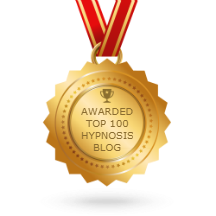by Herve Boisde
Pain equals suffering and suffering equals pain. Right? Actually no. They are different and one does not necessarily need to follow the other. Pain is a physical response to a stimulus. Suffering is emotional. We need to experience pain in certain situations in order to be safe. If there was no pain response we could burn ourselves and not even notice it. Or we might not be cautious when playing rough sports. Pain is important feedback for our health. Suffering on the other hand may linger after the physical pain has died away, because, like many emotions, it can be habit forming. When we expect to suffer we tend to help those expectations come true. Suffering is the emotional pain caused by the resistance to what is. Sometimes we suffer because we don't accept our situation. Sometimes when we get sick we fall into self-pity mode and think "why me?" And that very attitude can cause us to neglect doing the things that would help us to get better. In those situations we're not only resisting 'what is' but we're actually making things worse.
With chronic pain or injuries people tend to tense up when they are in situations that usually cause pain. For example, if someone has back pain and they are dreading having to bend down to tie their shoes, they will usually brace themselves and tense up as they are bending down. Again, this is a form of resisting the pain and making things worse. Fear of pain leads to tensing up, which then leads to a cycle of suffering. You might be thinking: "It's impossible to NOT brace yourself for pain. Pain hurts!" Yes, pain can hurt and it's perfectly normal to want to avoid it but there are techniques that work to allow your mind and body to feel more comfortable in those situations. Hypnosis can be used to condition your body to relax in those 'trigger' situations and help break the fear-of-pain cycle. The hypnosis practitioner would actually deliver a post-hypnotic suggestion to the client's subconscious mind such as:
“(Client’s name), when doing things like bending down to tie shoelaces, you are calm, confident, and relaxed. More and more now, your back muscles are flexible and comfortable when bending down and standing up. Because you expect to be comfortable, you are more comfortable when bending down and standing up.”
One of the more impressive things that happened when I was at hypnotherapy school was when the class watched a video of a patient undergoing major leg surgery (with a bone saw and everything) with no anesthesia except for hypnosis. I felt like I was in more discomfort just watching the video than the patient. A close second was a video that our instructor shot of himself getting a crown replaced at the dentist. He doesn't like Novocaine so he instead used self-hypnosis to put himself into a comfortable trance where the dentist could do the procedure and he was awake and conscious, just feeling no pain. I'm not sure that I would attempt that but he was well practiced enough with self-hypnosis that he was completely confident that it would be successful. Of course he had also instructed the dentist that if he put his hand up it meant that he was feeling pain and would receive the Novocaine. He never raised his hand.
The conscious mind can only focus on one thought at a time so hypnotherapy can direct the client to empty his mind of the experience of pain by filling it instead with pleasurable thoughts. A person with a broken limb might visualize that they are on a beach in Hawaii and focus instead on the warm sun on their face, the cool breeze, the relaxing sounds of the ocean, and the feel of the fine sand next to their plush beach blanket. The hypnosis practitioner could either anchor that comfortable feeling so that it can summoned up whenever the client touches their thumb and forefinger together, or teach the client self-hypnosis so they can go back to Hawaii whenever they want. They might also record a self-hypnosis CD or audio file for the client to listen to as they are falling asleep at night, with added suggestions for a comfortable night's sleep!
These are just some examples of how hypnosis can be used for pain management. But all of us have the ability to look at pain and suffering in a different way.







